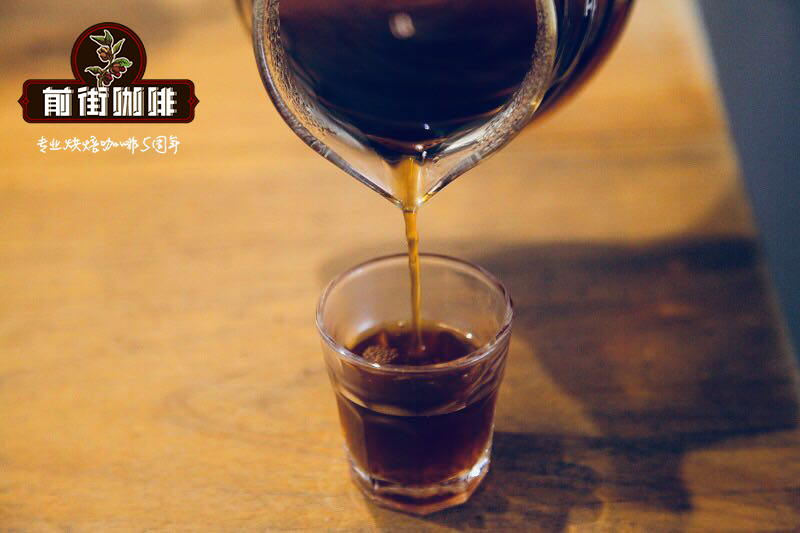What is the effect of the planting place of Yemeni mocha coffee on coffee flavor? Yemen mocha and coffee trade

Professional coffee knowledge exchange more coffee bean information please follow the coffee workshop (Wechat official account cafe_style)
Yemen has been mired in years of endless war since 2014. last week, the Geneva-based World Economic Forum released a ranking of the competitiveness of global economies, ranking Yemen at the bottom 137. The World Economic Forum called Yemen a country that has been "further damaged by civil war, economic collapse, cholera and near famine".
But recently, people may have seen hope that things are getting better. According to the Arab media alarabiya, Yemeni Environment and Water Minister Ezzi Shuraim visited Taiz two weeks ago, the first time in recent years that Yemeni government officials have visited the city, which was recently rescued from the armed forces organized by Hussein. Ezzi Shuraim met with the local government and, in addition to discussing the recovery and reconstruction of the city, he mentioned Mocha, a coastal city west of Taiz, and talked about possible future plans to build a desalination plant (Desalination Plant) there.

Coffee lovers may wonder why this seaside town called Mocha has the same name as fancy coffee that everyone loves. The answer is that this is not a coincidence, because the name mocha coffee comes from here, but the connection took place hundreds of years ago.
If you go back to the late 17th and early 18th centuries, Mocha, a port city, was a prosperous trading port with developed maritime trade, and many merchant ships were loaded with the country's wild cocoa-flavored coffee beans that would cross the Red Sea and the Mediterranean Sea. It eventually became a fascinating chocolate-flavored black drink on the European dinner table: coffee.
According to the Encyclopedia Britannica, the beginning of the 18th century was the heyday of coffee trade between Yemen and Europe, which directly laid the foundation of European coffee culture, and later extended to North America, Asia, etc.-it can be said that without the "mocha" of Yemen, coffee, as one of the three major drinks in the world, would not be popular all over the world.
Don't get me wrong, Ethiopia is indeed the hometown of coffee, but according to the World Coffee Research Organization (WCR) historical records, as early as the fifth century BC, the port of Mocha in Yemen welcomed the first batch of coffee beans from Ethiopia, which became the starting point of Yemen's bond with coffee. Coffee appeared for the first time in human history as a drink in the Yemeni city of Zabid.
Coffee research author Mark Pendergrast describes in her book that in 1450, drinking coffee became a necessary lesson for Yemeni Arab Sufi believers before evening prayers to keep a clear head during prayer. This kind of drink, which was originally of a medical or religious nature, quickly entered people's daily life. In 1517, the Ottoman Turks included Yemen in their territory, and the reputation of coffee spread quickly, driven by this once-popular empire.
At the end of the 15th century, Muslim pilgrims further extended coffee to the whole Islamic world. In order to meet the increasing consumer demand, Yemenis began to grow their own coffee, and Yemen became the first country in the world to produce coffee as a crop on a large scale. Soon, it was discovered that the plant could only be grown at high elevations, so the port of Mocha, which is adjacent to the highlands and has a better wharf infrastructure, became the most suitable place to export coffee.
Important Notice :
前街咖啡 FrontStreet Coffee has moved to new addredd:
FrontStreet Coffee Address: 315,Donghua East Road,GuangZhou
Tel:020 38364473
- Prev

The question of the thickness of hand-made coffee powder is how many degrees of gouache and what is the ratio of gouache to water
Professional coffee knowledge exchange more coffee bean information please follow the coffee workshop (Wechat official account cafe_style) hand-brewed coffee is really great! You can watch the flow of water stay gracefully, while a good coffee is like a crystal-clear liquid, and the best thing is that anyone can make it at home. But it looks great, but it's not as simple as it looks, except for the usual water temperature.
- Next

Introduction of Yemeni mocha coffee import standard introduction of Yemeni mocha coffee cultivation introduction of Yemeni coffee price
Professional coffee knowledge exchange more coffee bean information Please follow the coffee workshop (Wechat official account cafe_style) since 2014, Yemen has been caught in an endless war. Last week, the Geneva-based World Economic Forum released a ranking of the competitiveness of the world's economies, with Yemen at the bottom at 137. The World Economic Forum said Yemen was due to civil war.
Related
- Beginners will see the "Coffee pull flower" guide!
- What is the difference between ice blog purified milk and ordinary milk coffee?
- Why is the Philippines the largest producer of crops in Liberia?
- For coffee extraction, should the fine powder be retained?
- How does extracted espresso fill pressed powder? How much strength does it take to press the powder?
- How to make jasmine cold extract coffee? Is the jasmine + latte good?
- Will this little toy really make the coffee taste better? How does Lily Drip affect coffee extraction?
- Will the action of slapping the filter cup also affect coffee extraction?
- What's the difference between powder-to-water ratio and powder-to-liquid ratio?
- What is the Ethiopian local species? What does it have to do with Heirloom native species?

